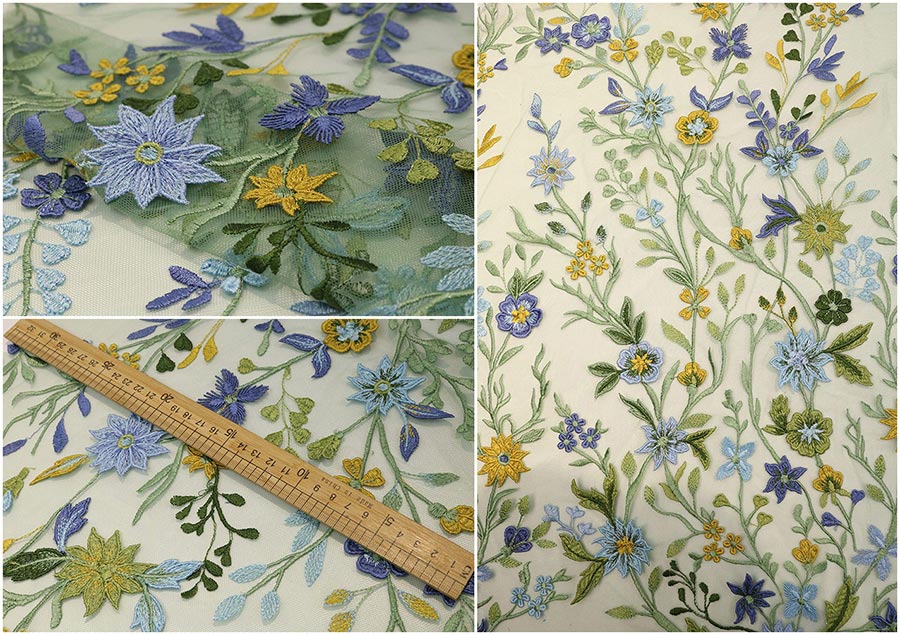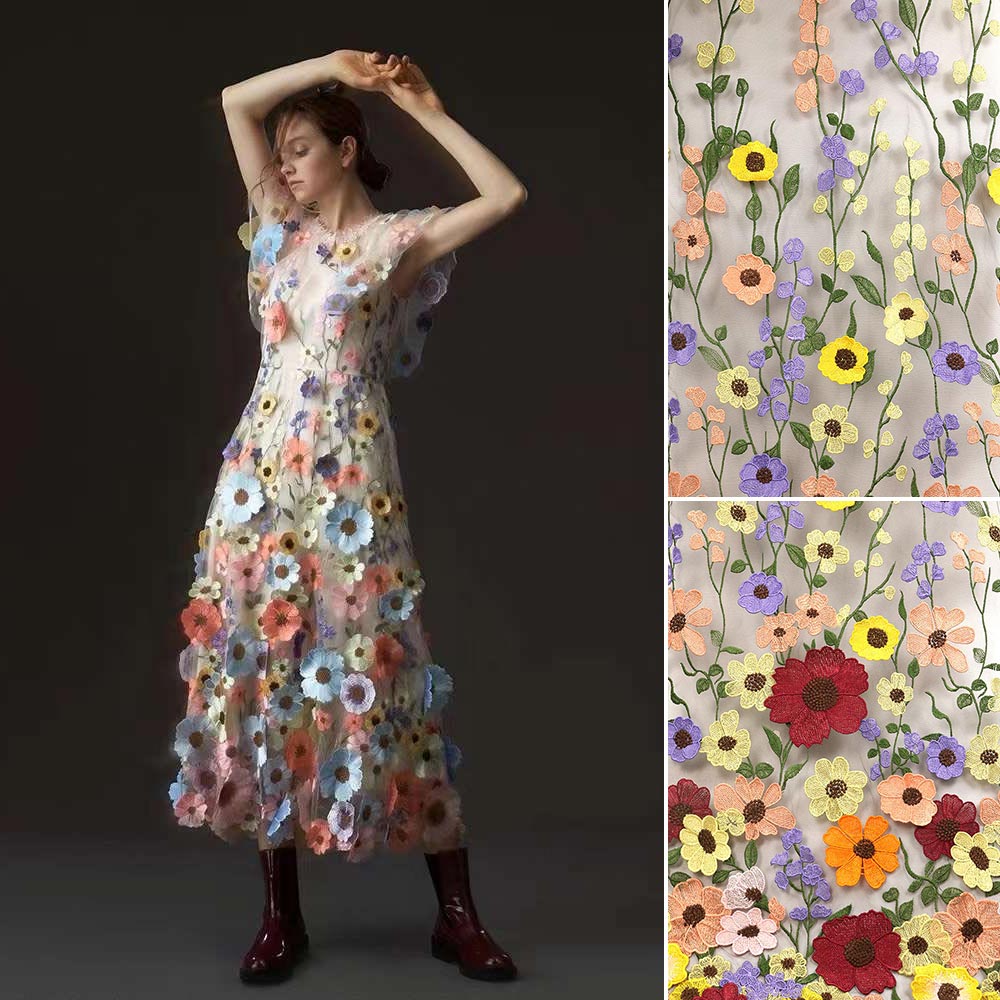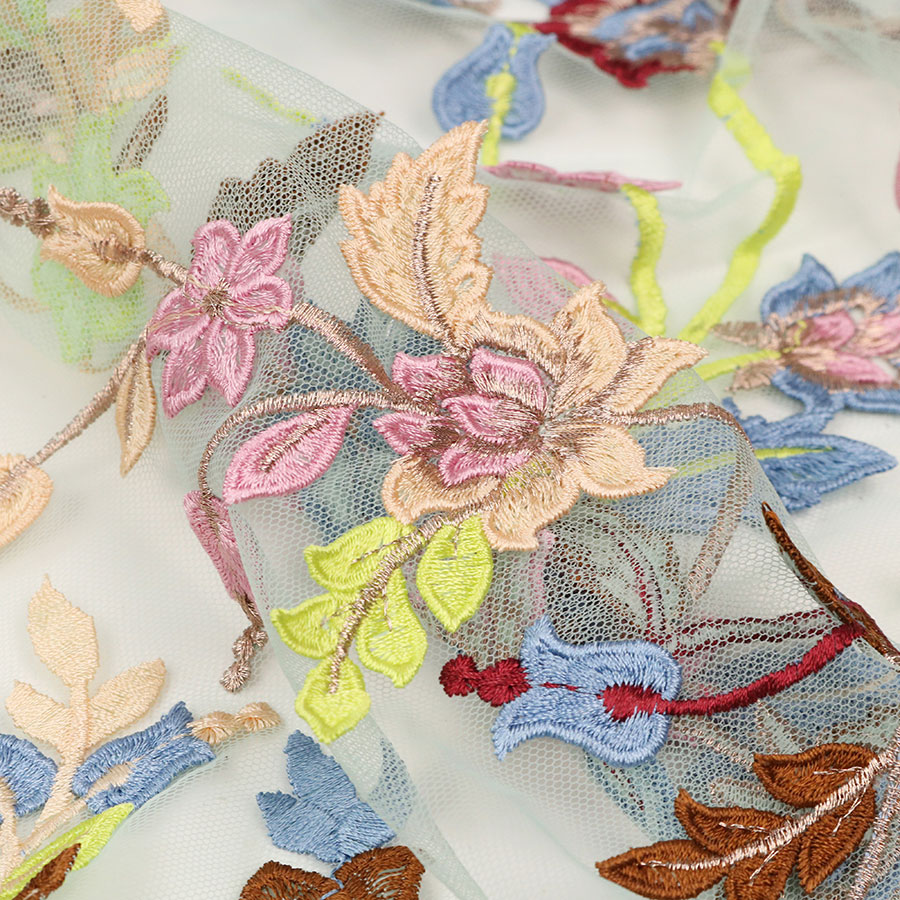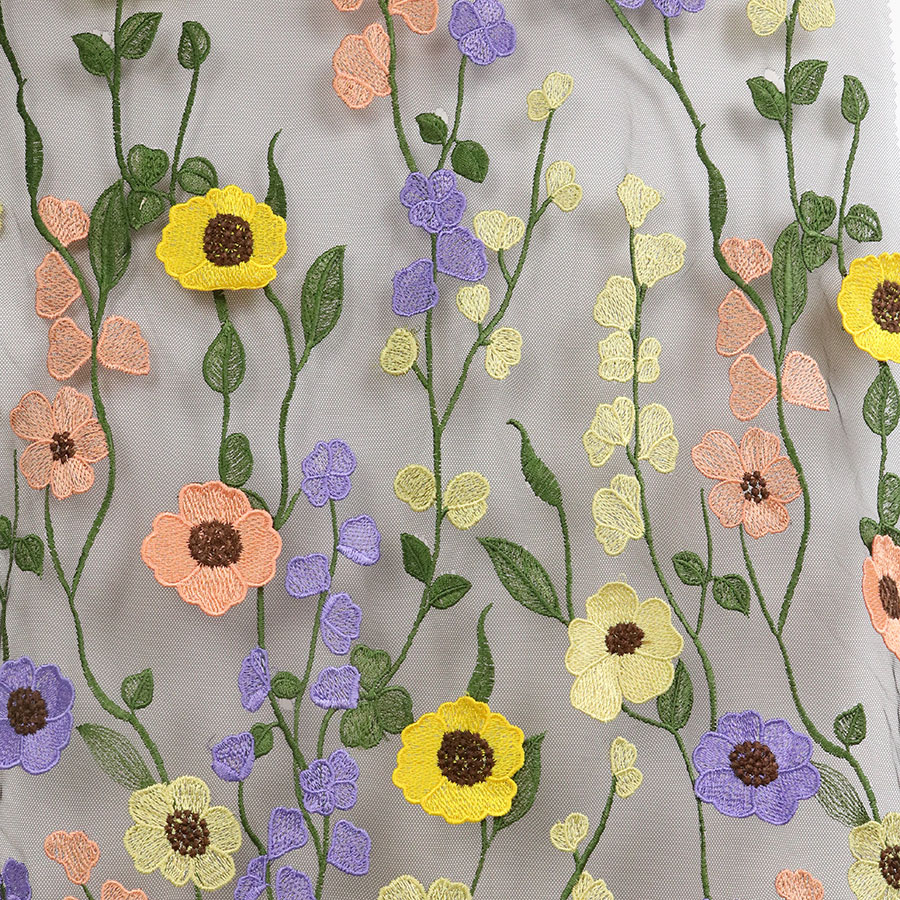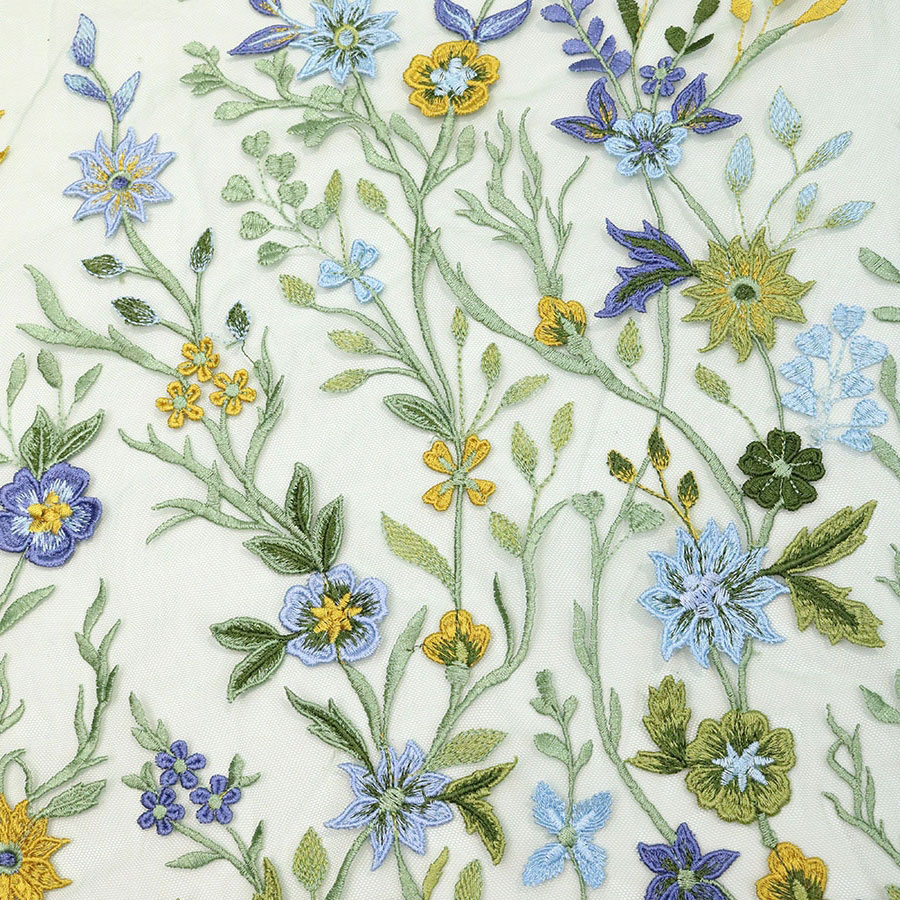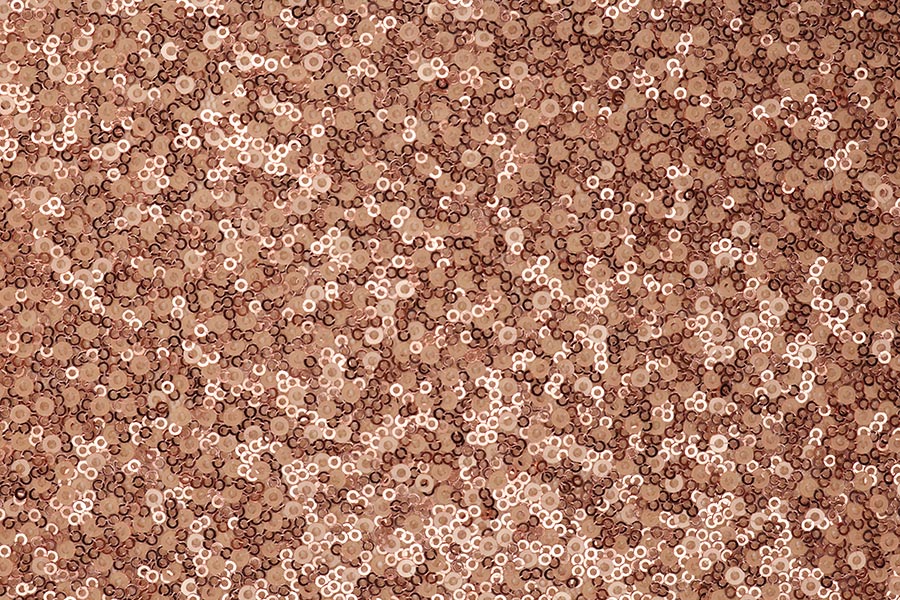3D embroidery can create a three-dimensional pattern with a strong visual effect, whether it is text or graphics, showing a high-level texture in terms of vision and touch. It can be combined with printing or appliqué embroidery for partial embellishment, the contrast effect increases the sense of process difference, and hollow three-dimensional embroidery can also be used to present a more soft three-dimensional sense.
Generalized 3D Embroidered Fabric
Generally speaking, all computerized machine embroidered fabrics with obvious 3D three-dimensional shapes are called 3D ( three-dimensional ) embroidered fabrics.
Here, 3D embroidery specifically refers to multi-plane embroidery. The embroidery patterns are distributed in multiple layers, staggered from top to bottom, and the fabric patterns are distinct and three-dimensional.
The designer for Moiselle used this 3D floral embroidered fabric to design this dress, which is rich in layers and beautiful in shape. Item: NEW-L0307
The production method of 3D three-dimensional embroidery is the same as that of flat embroidery. According to the requirements of the drawings, the stitching method and thread quantity are used, stitches are placed in the specified places, different parts are used in different colors, and the embroidery pattern is sewed according to the design steps. The material can be filled layer by layer and embroidered layer by layer. After the three-dimensional modeling part is embroidered, use stitches to close the embroidery pattern outline.
Narrow 3D Embroidered Fabric
In a narrow sense, 3D three-dimensional embroidery is a special embroidery technology, which is divided into solid three-dimensional embroidery process and hollow three-dimensional embroidery process. Solid three-dimensional embroidery is to set the filling layer on the fabric, and then use the embroidery thread to express or reflect the three-dimensional effect of the object according to the design steps and the design requirements of the three-dimensional embroidery drawing. That is, the filling material is wrapped in the ordinary flat embroidery process to form a three-dimensional pattern.
3D embroidery in a narrow sense is usually used on ready-made fashion, hats and other decorations, rather than 3D embroidered fabrics. The filling material uses foam sponge and styrene board, etc., which do not interfere with the embroidery process, and its thickness is usually in the range of 3-5mm between the presser foot and the fabric. However, as the number of times of washing increases, the sponge will gradually deform, thus affecting the overall three-dimensional effect of the three-dimensional embroidery. At present, the most commonly used filling material is EVA glue.
Hollow three-dimensional embroidery is that the filling layer replaces EVA glue with water-soluble paper. The water-soluble paper has a stable shape before water-dissolving, so that the filling layer of 3d three-dimensional embroidery can stably produce the design shape during processing, and the three-dimensional embroidery is completed. After that, the water-soluble paper dissolves and disappears to form a hollow state. Compared with the traditional method of directly leaving the hollow layer to form the hollow layer, the hollow layer obtained by the water-soluble method can effectively ensure the embroidery effect of the 3D three-dimensional embroidery, thereby reducing the deformation of the 3D three-dimensional embroidery in the production process. The specific number of layers of water-soluble paper is selected according to the actual design needs, so as to improve the richness of the three-dimensional embroidery style.
Precautions for Three-dimensional Embroidery Plate
- The stitch density is a little denser than ordinary flat embroidery, and the general density is 0.35-0.4.
- Turn off short stitch and shrinkage compensation.
- In order to put the foam at the last stop, the step of pressing the foam is placed at the end, and the operation process is the same as that of the appliqué embroidery.
- Even if the color is the same, some people need to press the foam, some don’t, the color of the object that presses the foam should be changed for the final operation.
- The outline of the embroidery pattern should be closed, and the filling materials such as foam sponge and styrene board should be cut off.
Features of 3D three-dimensional Embroidered Fabric
- It can embody shapes that cannot be embody only by a single embroidery thread, making the embroidery pattern more three-dimensional.
- Multiple embroidery stitches form a distinct three-dimensional effect on the base fabric, which can better highlight the details and luster of the color.
- Larger patterns can also be processed on embroidery objects with a smaller embroidery range such as craft decorations and hats.

If you want our fabrics, please contact us immediately:
fabric#nayingfabric.com ( @ replace # )
